|
||||
CORVETTE ZR1: IT’S GOOD TO BE THE KING
Rumor became fact at the 1989 Geneva Auto Show, when the ZR-1 officially debuted. It was a time when performance cars were only beginning to regain some of the performance enjoyed during the heyday of the muscle car, and the ZR-1’s 375-horespower (280 kW) LT5 V-8 engine – with its DOHC configuration and four-valve heads – was an intoxicating breath of high-octane excitement. The all-aluminum LT5 engine’s design was a collaboration of GM and Lotus Engineering, sharing only a 5.7-liter displacement with other small-block engines. The engine was built by Mercury Marine, which was renowned for its aluminum machining capability. Engineers were justifiably proud of the LT5’s refinement and smoothness; so much so that it was claimed a nickel placed on its end on top of the engine wouldn’t fall over when the engine was started. The challenge was immediately taken up – and the LT5 roared to life while the nickel remained standing. The ZR-1 was more than merely a more powerful Corvette – it was a complete performance package that included wider rear bodywork to accommodate humongous rear tires and a unique, convex rear fascia with rectangular taillamps that made the car recognizable at a glance. The distinctive exterior elements contributed to the car’s mythical status among enthusiasts and auto critics. At its launch, the ZR-1 was found on the cover of just about every automotive publication around the globe, with Car and Driver dubbing it the “Corvette from Hell.” Proving the ZR-1’s performance lived up to its instant legend status, a production model was sent to a high-speed test track at Fort Stockton, Texas, and set seven world speed records – the most notable being a 24-hour endurance run that averaged 175.8 mph (283 km/h) and recorded more than 4,200 miles. During 1990, the premium ZR-1 recorded 3,044 sales. Subsequent model years didn’t quite match the buzz created by that first year, even with a horsepower increase to 405 (302 kW) in 1993. This was due partly to all Corvette models from 1991 through 1995 – the ZR-1’s 1995 final year – wearing convex rear fascias that made them almost indistinguishable from the higher-performance “King of the Hill” models. Total production of the 1990-95 ZR-1 was 6,939. The new king
Nineteen years after its initial release, a new ZR1 is set to reclaim the title as the king. Interestingly, the standard 2008 Corvette has more horsepower than the 1990 ZR-1, but the new ZR1’s approximate 620 horses is 45 percent more than the base model’s 430 rating. That’s roughly the same advantage the LT5 carried over the standard 1990 Corvette’s 250-horsepower engine. By the way, historians and detail-minded enthusiasts will note the ’09 ZR1 is spelled without the hyphen that designated the 1990-95 ZR-1. This is because GM has changed its naming convention and the un-hyphenated “ZR1” corresponds with the current rule for alphanumeric designations. |
||||
|
||||


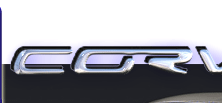
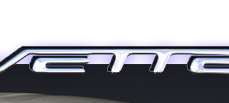

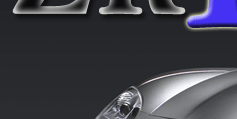

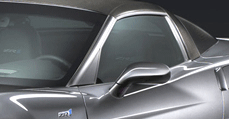
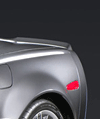








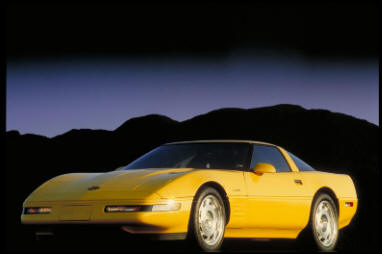 Few
new cars have ever caused the stir that whipped up
around the 1990 Corvette ZR-1. It started with fuzzy
spy photos and Detroit gossip about a high-powered,
“King of the Hill” model. Chevrolet was coy, neither
confirming nor denying the grist of the rumor mill.
Few
new cars have ever caused the stir that whipped up
around the 1990 Corvette ZR-1. It started with fuzzy
spy photos and Detroit gossip about a high-powered,
“King of the Hill” model. Chevrolet was coy, neither
confirming nor denying the grist of the rumor mill.
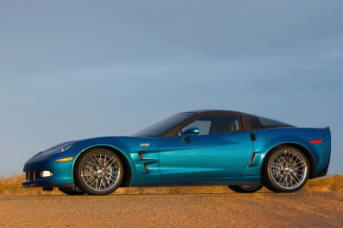 With
features such as unique , exposed carbon-fiber body
panels, a raised hood with a window to the LS9
engine and massive 19-inch front and 20-inch rear
wheels, there’s little chance the new ZR1 will be
mistaken for any other model. It also wears
distinguishing blue accents, including the engine
cover visible through the hood window, the brake
calipers and the rear fascia badge – the only rear
fascia badge affixed to current-generation
Corvettes.
With
features such as unique , exposed carbon-fiber body
panels, a raised hood with a window to the LS9
engine and massive 19-inch front and 20-inch rear
wheels, there’s little chance the new ZR1 will be
mistaken for any other model. It also wears
distinguishing blue accents, including the engine
cover visible through the hood window, the brake
calipers and the rear fascia badge – the only rear
fascia badge affixed to current-generation
Corvettes.